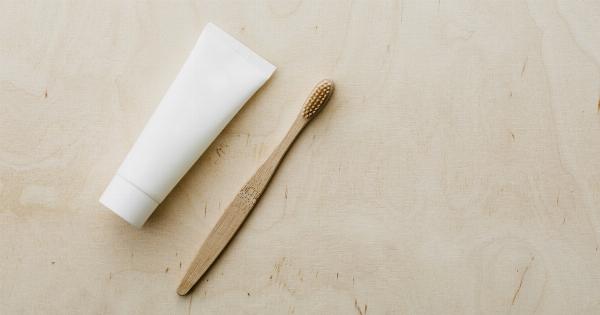Gray matter is a vital component of our brain that helps us understand language, process information, and control muscle movements. It also plays a crucial role in our memory.
Our brain starts losing gray matter as we grow old, and the extent of this decline depends on various factors, including genetics, lifestyle habits, and environmental factors. However, some kids preserve more gray matter into adulthood, which is an intriguing phenomenon that scientists are exploring.
In this article, we will explore the latest research findings that reveal the reason why some kids preserve more gray matter into adulthood.
What is Gray Matter?
Gray matter is a type of brain tissue that contains the cell bodies, dendrites, and synapses of our neurons. It gets its name from the grayish-brown color it has when viewed in certain parts of the brain.
Gray matter is essential for our cognitive functions, such as perception, memory, emotion, and attention. It is also responsible for controlling our movements, including voluntary and involuntary movements.
Why Do We Lose Gray Matter as We Grow Old?
As we grow old, our brain undergoes several changes that can affect its structure and function. One of the most noticeable changes is the loss of gray matter.
Research shows that the amount of gray matter in our brain declines at a rate of about 0.2 percent per year after the age of 30. This decline is more pronounced in certain areas of the brain, such as the prefrontal cortex, hippocampus, and amygdala.
These areas are responsible for higher-order cognitive functions, such as executive control, working memory, and emotional regulation.
Several factors can contribute to the loss of gray matter, including:.
- Age
- Chronic stress
- Poor sleep quality
- Unhealthy diet
- Sedentary lifestyle
- Smoking
- Alcohol consumption
- Environmental toxins
- Brain injury or disease
- Genetics
What is the Importance of Preserving Gray Matter in Our Brain?
The preservation of gray matter is crucial for maintaining our cognitive functions, especially as we grow old.
Gray matter contains the neural circuits that are responsible for our cognitive abilities, such as perception, memory, attention, and decision-making. The loss of gray matter can result in impaired cognitive function, leading to a decline in quality of life.
Research shows that people with higher amounts of gray matter tend to have better cognitive abilities, including better memory and language skills.
Why Do Some Kids Preserve More Gray Matter into Adulthood?
The preservation of gray matter into adulthood is an intriguing phenomenon that scientists have been investigating.
Some studies suggest that kids who engage in cognitively stimulating activities, such as reading, playing music, or solving puzzles, tend to have a higher amount of gray matter in their brain. Other studies suggest that kids who have healthy lifestyle habits, such as regular exercise, healthy diet, and good sleep quality, also tend to preserve more gray matter into adulthood.
A recent study published in the Journal of Neuroscience sheds some light on this phenomenon.
The study, conducted by researchers at the University of Maryland, aimed to investigate the neural basis of individual differences in cognitive aging trajectories. The researchers recruited a group of children aged 7-9 years and measured their gray matter volume using magnetic resonance imaging (MRI).
They also measured the children’s cognitive abilities, such as working memory, attention, and language skills.
The children were then asked to engage in a 30-minute aerobic exercise session, during which they ran on a treadmill for 20 minutes and completed several cognitive tasks.
After the exercise session, the researchers measured the children’s gray matter volume again using MRI. They found that the children who had higher amounts of gray matter before the exercise session experienced a greater increase in gray matter volume after the exercise session.
They also found that the children who had higher cognitive abilities before the exercise session showed a greater improvement in their cognitive abilities after the exercise session.
What Does This Study Imply?
This study implies that the amount of gray matter that children have before engaging in an aerobic exercise session can influence the amount of gray matter they retain after the session.
The researchers suggest that children who have higher amounts of gray matter before the exercise session may have a better ability to adapt to the physical and cognitive demands of the exercise, resulting in a greater increase in gray matter volume. The study also implies that children who have higher cognitive abilities before the exercise session may benefit more from the exercise in terms of cognitive improvement.
What are the Implications of This Study?
This study has several implications for our understanding of cognitive development and aging.
First, it suggests that children who engage in regular aerobic exercise may preserve more gray matter into adulthood, which can have a positive impact on their cognitive function.
Second, it implies that the amount of gray matter that children have before engaging in aerobic exercise can influence the amount of gray matter they retain after the exercise, highlighting the importance of early interventions for cognitive development. Third, it suggests that regular aerobic exercise may have a protective effect against age-related cognitive decline by preserving gray matter.
Conclusion
Gray matter is a vital component of our brain that is responsible for our cognitive functions. The amount of gray matter in our brain tends to decline as we grow old, which can result in impaired cognitive function.
However, some kids preserve more gray matter into adulthood, and recent research suggests that engaging in regular aerobic exercise can play a significant role in this preservation. By understanding the neural basis of cognitive development and aging, we can develop interventions that can promote healthy brain function and cognitive abilities throughout the lifespan.































